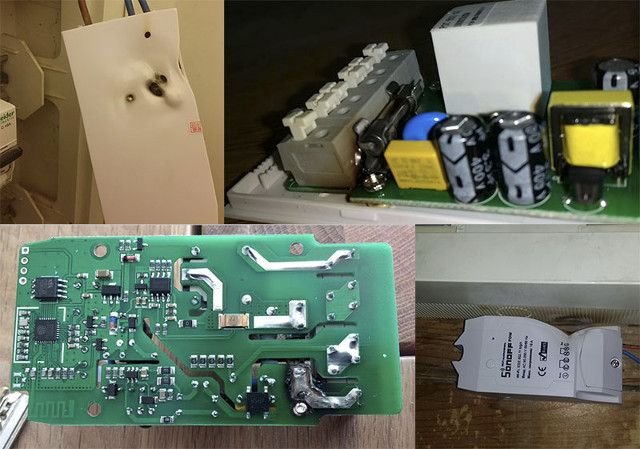Sonoff TH16 and Sonoff POW are inexpensive and useful wireless switches based on ESP8266 WiSoC. I’m using Sonoff TH16 to control a water pump, and Sonoff POW to monitor my office power consumption. I received mine in early November 2016, so they were probably manufactured sometimes in October. Does manufacturing month matter? Yes, it does, as ITEAD Studio has just issued a recall notice for both devices for a batch manufactured between December 2016 and January 2017.
 The problem is that while the switches come with a 16A relay, the trace were not thick enough, and if you connect a device that draws enough power, they would heat enough to make the case slowly melt. The problem is that ITEAD Studio asked the factory to add “sufficient tin to the wires to ensure low enough impedances”, but they did not quantify it clearly, and that’s why the product is not safe to use.
The problem is that while the switches come with a 16A relay, the trace were not thick enough, and if you connect a device that draws enough power, they would heat enough to make the case slowly melt. The problem is that ITEAD Studio asked the factory to add “sufficient tin to the wires to ensure low enough impedances”, but they did not quantify it clearly, and that’s why the product is not safe to use.
If you are affected, the good thing is the company owed their mistake, and you can contact the company for a refund or replacement by providing a photo or video, as well as your order number. What they did not say exactly is how to identify a product with the defect, that is before it melts…
In order to avoid the issue in the future, they’ve “optimized their workflow”, and “are seeking for better solution to improve the product during the manufacturing process”.

Jean-Luc started CNX Software in 2010 as a part-time endeavor, before quitting his job as a software engineering manager, and starting to write daily news, and reviews full time later in 2011.
Support CNX Software! Donate via cryptocurrencies, become a Patron on Patreon, or purchase goods on Amazon or Aliexpress




